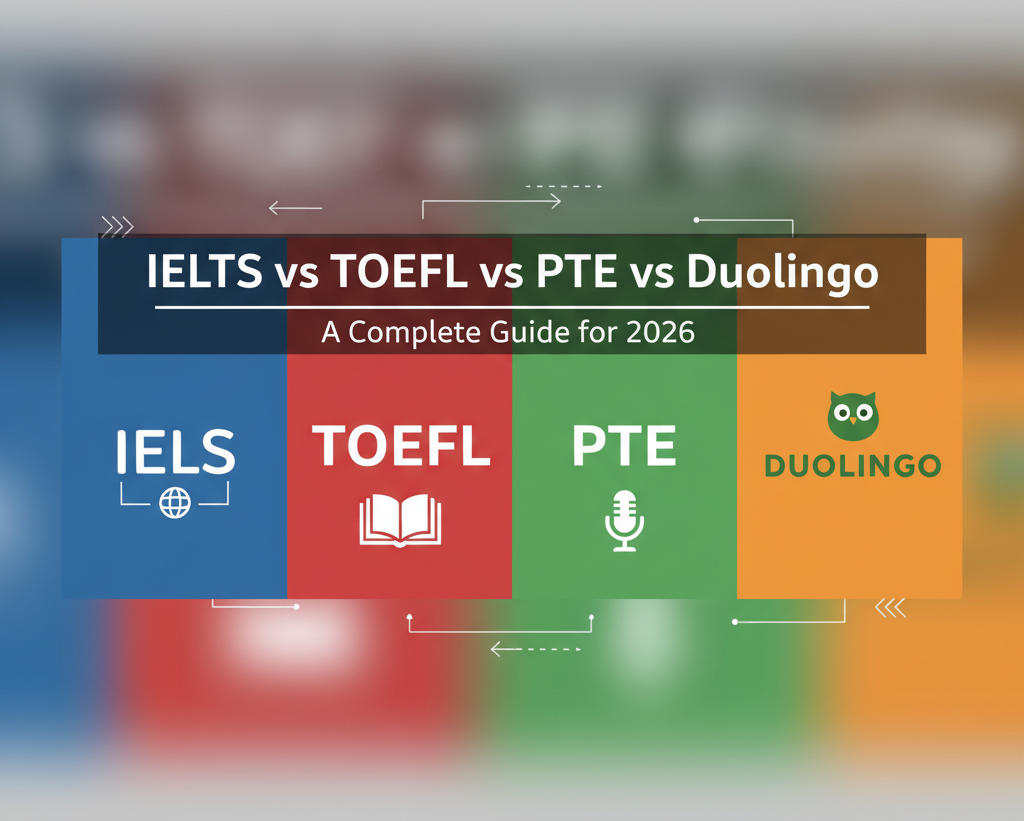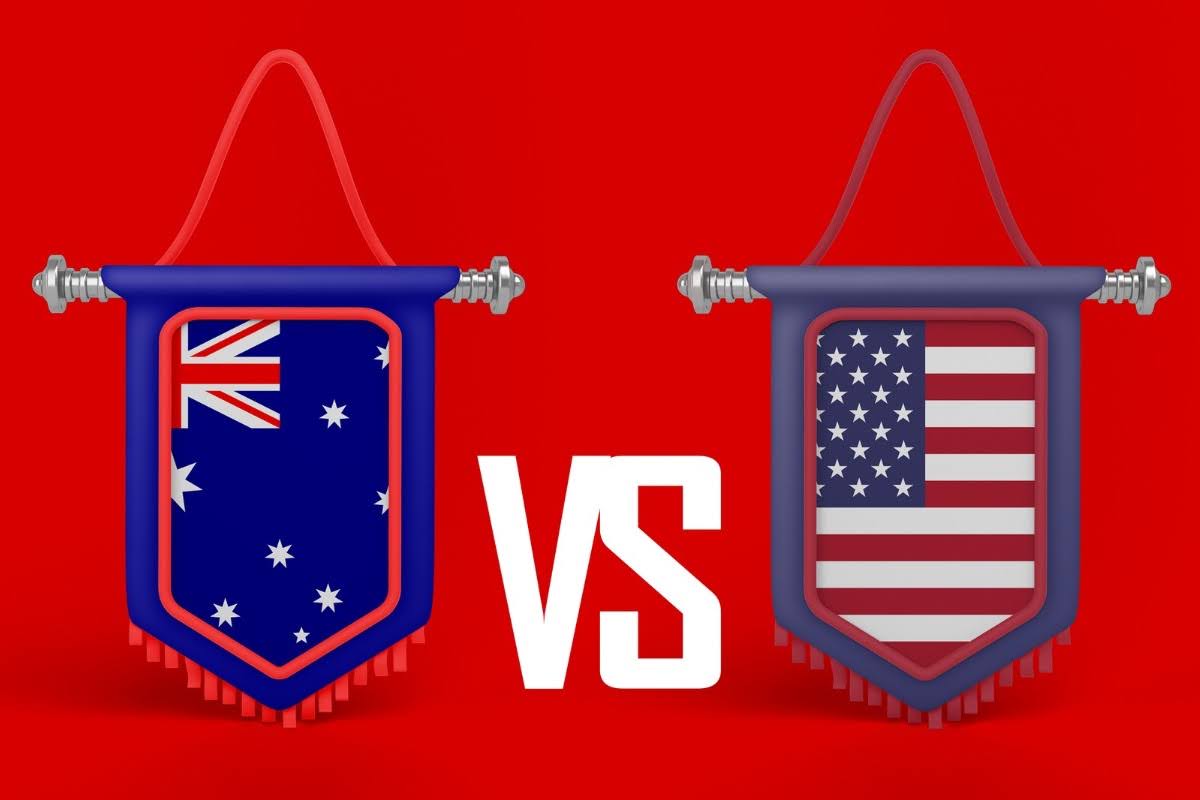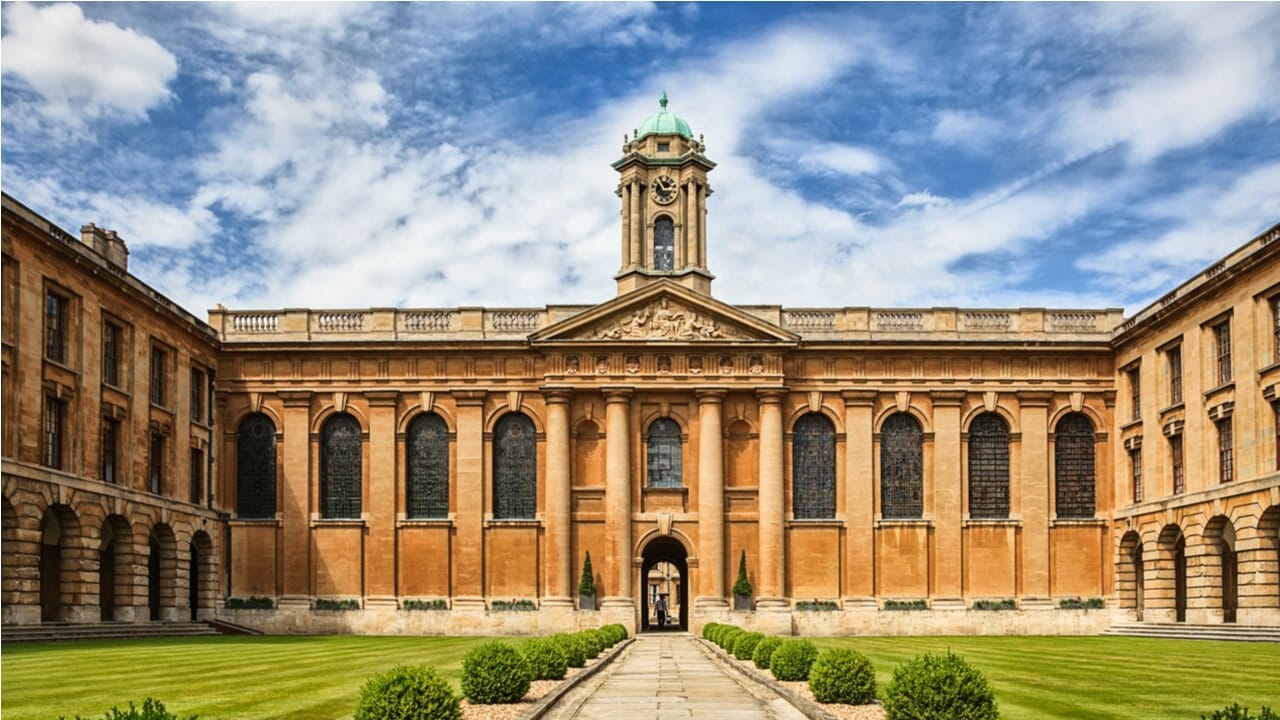The USA hosts a large number of international students every year. Currently, over 2,50,000 Indian students are studying in the US. Students prefer the USA primarily because of its top-ranked universities and reputed degrees. The country offers high-quality education, a multicultural environment, and ample job opportunities.
Applying for a student visa is crucial in realising your dream of studying in the United States. This student visa guide takes a cursory look at various categories of visas. It aims to explain how to apply for an F-1 Student Visa, which is required for international students who wish to pursue an undergraduate or graduate degree in the United States.
The Student and Exchange Visitor Information System (SEVIS) fee is a crucial component of the U.S. immigration process for international students and exchange visitors. It funds the Student and Exchange Visitor Program (SEVP), which monitors students and exchange visitors in the United States.
SEVP ensures compliance with U.S. immigration laws and maintains accurate information about students and their dependents. The SEVIS visa fees for the USA are mandatory charges supporting monitoring and data collection activities.
Did you know? SEVIS visa fees for the USA are a vital part of the infrastructure that helps keep track of more than a million international students in the U.S. at any given time. Without this system, managing student records and visa compliance would be significantly more challenging.
Choose your dream country
When do you want to study abroad?
What's your highest level of education?
Select you current city
How Leap will help you
Personalised University Shortlist
Express Applications with Quicker Admits
End-to-End Application Support
| Topic | Key Information |
| What are the SEVIS visa fees for the USA for an F-1 Visa | INR 29K ($350) |
| SEVIS Fee Amount | What is the SEVIS visa fees for the USA for an F-1 Visa |
| Exemptions | Transfer students (within SEVP-certified schools) Dependents (F-2, M-2, J-2) Participants in certain federally funded J-1 programs |
| Payment Methods | Online via: FMJFee.com By mail: Western Union Quick Pay. |
| SEVIS fee Validity | F1- up to 5 years J1- up to 18 months M1- 1 year and can be extended up to 3 years |
What are the SEVIS Visa Fees for the USA?
Understanding the SEVIS visa fees for the USA is essential for every prospective international student. It is not just a fee; it represents your initial investment in ensuring your records are accurately maintained throughout your academic journey in the U.S.
What is the SEVIS fee for an F-1 Visa?
As of today, the SEVIS fee for an F-1 visa in the USA is INR 29K ($350). This fee is typically a one-time payment made before applying for a visa. The SEVIS fee ensures that your information is recorded and tracked throughout your stay in the United States.
Paying this fee is essential as it allows SEVP to manage and regulate the status of international students, ensuring their activities comply with the terms of their visas.
Categories of Individuals Required to Pay the SEVIS Fee

Did you know that the SEVIS visa fees for the USA is not just a formality; it's an integral part of the U.S. immigration system that helps maintain accurate records of a student's academic progress and compliance with visa regulations?
Having said that, the SEVIS visa fees for the USA apply to several categories of individuals, making it a significant aspect of the visa application process. Here’s every detail you should know.
1. F-1 Student Visa
If you wish to enrol in a program requiring more than 18 hours per week of academic work, you must apply for an F-1 student visa. This includes all undergraduate programs, such as MS, MBA, and similar degrees. The visa is valid for up to 5 years.
- Your dependents, such as a spouse or child, must apply for an F-2 visa.
- Please be aware that spouses are not permitted to hold jobs under the F-2 visa, but they are welcome to accompany you and can file for their visas if they wish to work or study in the United States.
2. J-1 Exchange Visitor Visa
If you are a student, visiting scholar, or lecturer participating in an exchange program, you are eligible for the J-1 Exchange Visitor Visa. For example, suppose you are a Fulbright researcher or a student from an Indian college participating in a short-term study abroad program. In that case, you can travel to the United States on a J-1 visa. It is valid for 18 months.
- As a working professional wishing to participate in an exchange program in the United States, you would typically request the J-1 visa, also known as the Exchange Visitor Visa.
- If you have dependents, including children and a spouse, they must apply for a J-2 Visa. Please note that both partners in a married couple can work, provided they obtain the necessary consent in advance.
3. M-1 Vocational/ Non-Academic Student Visa
If you are attending a vocational or technical school, you will need to apply for an M-1 visa, a type of student visa. The application process for the M-1 visa is quite similar to that of the F-1 visa. However, be aware that M-1 visas have a timestamp when you enter the country and are not allowed to overstay your visit. This is available for 1 year and is extendable up to 3 years.
Are you concerned about financing your studies in the US? Leap Finance offers education loans without collateral, featuring competitive interest rates covering tuition and living expenses. Get a loan offer in just 10 minutes today!
SEVIS Visa Fees for the USA for Indian Students
Want to know how much is the SEVIS fee for an F-1 Visa in the USA? Different categories of visas have different SEVIS fees. For instance, the SEVIS fee for an F-1 visa in the USA differs from that for J-1 exchange visitors. Knowing the correct fee for your visa category is crucial to avoid payment issues. Here are the fees for each type of visa.
| Visa Type | SEVIS Visa Fees for the USA |
| F-1 Students | INR 29K ($350) |
| M-1 Students | INR 29K ($350) |
| J-1 Exchange Visitors | INR 18K ($220) |
| Au Pairs, Camp Counsellors, Summer Work/Travel Participants | INR 3K ($35) |
Also Read: F1 Visa: A Complete Guide on Application and Interview
Exceptions to the SEVIS Visa Fees for the USA Requirement
The SEVIS (Student and Exchange Visitor Information System) fee is a crucial part of the process for international students and exchange visitors coming to the United States. This fee is required to support the administration and maintenance of the SEVIS. This system tracks and monitors schools, students, and exchange visitors in the F, M, and J visa categories.
However, there are specific situations where you may be exempt from paying this fee. Understanding these exceptions can help reduce the financial burden of studying or accompanying a student in the U.S.
- Transfer Students: Students transferring between SEVP-certified schools without a break in their studies do not need to pay the SEVIS visa fees for the USA again.
- Dependents: Dependents in F-2, M-2, or J-2 status are not required to pay the SEVIS fee.
- Certain J-1 Programs: Participants in federally funded J-1 programs may be exempt from the SEVIS fee.
Please note: If you are a dependent accompanying an F-1 student, you are not required to pay the SEVIS fee. This can help reduce the financial burden on families moving to the U.S. together.
Ready to begin your journey to study in the US? Contact Leap Scholar for great assistance. Get all your doubts solved, and you’ll be ready to fly towards your dream university.
Payment Procedures for the SEVIS Fee
Paying the SEVIS visa fees for the USA is straightforward, and multiple options are available to accommodate various preferences and circumstances.
Options for Paying the SEVIS Fee
- Online Payment: The most common and convenient method.
- By Mail: This is for those who prefer traditional payment methods.
- Western Union Quick Pay: An option for international students who may find it easier to pay through a local Western Union office.
| Payment Method | Description |
| Online Payment | Via FMJFee.com with credit/debit card or electronic check |
| Mail Payment | Check or money order drawn on a U.S. bank, payable in U.S. currency |
| Western Union Quick Pay | Via the local Western Union office with the SEVIS I-901 form |
How to Pay SEVIS Fee Online
Did you know paying the SEVIS fees three business days before your visa interview is crucial to avoid delays in your visa processing? Paying the SEVIS visa fees for the USA online is the most efficient method. Here is a step-by-step guide:
- Visit the SEVIS I-901 Fee Processing Website: Start by going to FMJFee.com.
- Enter SEVIS ID: This ID is found on your Form I-20 (F-1 students) or Form DS-2019 (J-1 exchange visitors).
- Complete Form I-901: Provide personal information and details about your programme of study.
- Select Payment Method: Options include credit/debit card or electronic check (for U.S. bank accounts).
- Make the Payment: Follow the prompts to complete the transaction. Print the confirmation receipt, as you will need it for your visa application and possibly at your port of entry.
Details on Mail Payment
Paying by mail can take longer to process, so sending your payment well before your visa interview is essential to avoid any delays.

For those who prefer to pay by mail, here are the steps:
- Complete Form I-901: You can fill out the form online and choose to mail in your payment.
- Prepare the Payment: You can pay by check or order drawn from a U.S. bank and payable in U.S. currency.
- Mail the Form and Payment: Check the correct address before mailing your payment
- Wait for Confirmation: Once the payment is processed, you will receive a confirmation receipt by mail. This may take several weeks, so plan accordingly.
Instructions for Using Western Union Quick Pay
Western Union Quick Pay can be convenient if online payment options are limited. Here’s how to use It to pay your SEVIS fee.
- Find a Western Union Agent: Locate a Western Union office that offers Quick Pay services.
- Complete the Blue Form: Provide the following details:
- Company Name: SEVIS I-901
- Code City: SEVISFEE
- State/Province: MO
- Account Number: Your SEVIS ID
- Make the Payment: Pay the fee and any applicable Western Union service charges.
- Obtain the Receipt: Keep the receipt provided by Western Union, as it will serve as proof of payment.
Check Out: How Much Bank Balance is Required for US Student Visa in 2024?
SEVIS Visa Fees for the USA Refund Policy
Understanding the refund policy for the SEVIS visa fees for the USA is essential in case you need to withdraw your application or face visa denial. According to SEVP guidelines, the SEVIS visa fees for the USA are generally non-refundable. However, there are specific scenarios where you might be eligible for a refund. Here’s everything you need to know.
- Duplicate Payment: If you accidentally pay the SEVIS visa fees for the USA more than once, you can apply for a refund for the extra payment.
- Payment Error: If you made an error while paying and the payment was not processed correctly.
To request a refund, you must contact SEVIS I-901 Fee Customer Service and provide proof of the duplicate payment or error.
Although the SEVIS visa fees for the USA are typically non-refundable, there are exceptions. If you make an error during payment, you can get a refund by providing proof.
Want to enrol in your preferred university in the US? Contact Leap Scholar to get help selecting university as well as scholarships for your study abroad dream.
Important Considerations and Common Issues
When dealing with the SEVIS fee, it's important to be proactive and meticulous. Ensuring you meet all requirements well in advance can prevent unnecessary complications. Here are some key points to keep in mind.
Timing of Payment
It is crucial to pay the SEVIS visa fees for the USA well in advance of your visa interview. The fee must be paid three business days before your visa interview at the U.S. embassy or consulate. Payment delays can result in rescheduling your interview and potentially delaying your plans.
Did you know failure to pay the SEVIS visa fees for the USA on time can lead to significant delays in your visa application process? Make sure to pay it early to avoid any issues.
Proof of Payment
Always carry proof of your SEVIS fee payment when attending your visa interview and travelling to the United States. This proof typically includes the printed confirmation receipt from the online payment or the receipt from Western Union. Failure to present this proof can lead to issues with your visa processing or entry into the United States.
Carrying proof of your SEVIS fees for the USA payment is as important as carrying your passport. Without it, you might face problems during your visa interview or at the U.S. border.
Keeping Information Updated
Ensure that the information on your Form I-20 or DS-2019 is accurate and matches the information you provide during the SEVIS fee payment process. Any discrepancies can cause delays or complications in your visa application.
Any mismatch between the information on your Form I-20 or DS-2019 and your SEVIS fee payment can delay your visa process. Double-check all details to ensure accuracy.
To Sum Up
Exploring the SEVIS visa fees for the USA can seem challenging, but it becomes manageable with a clear understanding and preparation. The SEVIS fee amount is not just a financial obligation; it's a crucial step in the visa application process supporting the infrastructure tracking of over a million international students in the U.S. annually.
This fee funds the Student and Exchange Visitor Program (SEVP), ensuring that your academic journey is monitored, compliant with U.S. immigration laws, and accurately documented.
SEVIS visa fees for the USA are essential for maintaining your legal status as an international student or exchange visitor. This investment in your future provides peace of mind, knowing that your records and progress will be tracked throughout your stay.
In a nutshell, while the SEVIS visa fees for the USA are necessary for your journey to study in the United States, understanding their importance and managing the payment process efficiently can make your transition smoother. By preparing adequately and staying informed, you can focus on achieving your academic and professional goals in the United States.
Frequently Asked Questions
-
Q. What is the SEVIS fee?
Ans. The SEVIS fee is mandatory for the Student and Exchange Visitor Program (SEVP). This program monitors international students and exchange visitors in the U.S., ensuring compliance with immigration laws. It helps maintain accurate records of students and their dependents, supporting the management of visa statuses and academic progress.
-
Q. How much is the SEVIS fee for an F-1 visa in the USA?
Ans. The SEVIS fee for F-1 visa applicants is INR 29K ($350). This one-time payment must be made before applying for the visa. It ensures that the student's information is recorded and tracked throughout their stay in the U.S.
-
Q. Who needs to pay the SEVIS fee?
Ans. The SEVIS fee applies to F-1 students, M-1 students, and J-1 exchange visitors. Different categories of J-1 exchange visitors, like au pairs and camp counsellors, pay a reduced fee of INR 3K. Dependents and participants in federally funded J-1 programs may be exempt from this fee.
-
Q. How do I pay the SEVIS fee?
Ans. You can pay the SEVIS fee online via the FMJFee.com website using a credit/debit card or electronic check. Alternatively, you can pay by mail with a check or money order or through Western Union Quick Pay at a local Western Union office.
-
Q. When should I pay the SEVIS fee?
Ans. You should pay the SEVIS fee three business days before your visa interview to avoid delays in your visa processing. Timely payment ensures that the fee is recorded and processed in time for your interview at the U.S. embassy or consulate.
-
Q. Is the SEVIS fee refundable?
Ans. The SEVIS fee is generally non-refundable. However, refunds may be issued for duplicate payments or payment errors. To request a refund, contact SEVIS I-901 Fee Customer Service and provide proof of the duplicate payment or error.
-
Q. Are there any exceptions to the SEVIS fee?
Ans. Certain J-1 program participants, such as those in federally funded programs, may be exempt from the SEVIS fee. Additionally, dependents of F-1, M-1, or J-1 visa holders are not required to pay the fee.
-
Q. Can I pay the SEVIS fee for someone else?
Ans. Yes, someone else can pay the SEVIS fee on your behalf. Ensure they have your SEVIS ID and personal information to complete the payment process accurately. The payer should also provide you with the receipt to confirm payment.
-
Q. What is the SEVIS ID, and where can I find it?
Ans. The SEVIS ID is a unique identifier assigned to each student or exchange visitor. It is found on the top right corner of your Form I-20 (for F-1 students) or Form DS-2019 (for J-1 exchange visitors).
-
Q. Do transfer students need to pay the SEVIS fee again?
Ans. Transfer students moving between SEVP-certified schools without a break in their studies do not need to pay the SEVIS fee again. The cost is a one-time payment, valid as long as their academic program is not interrupted.
-
Q. What is the SEVIS fee validity?
Ans. The SEVIS fee validity is for the following time durations:
F1- up to 5 years
J1- up to 18 months
M1- 1 year and can be extended up to 3 years















Have Questions? Get Guidance to reach your Dream University
Connect with India's finest counsellors and biggest study abroad community.
Get Guidance